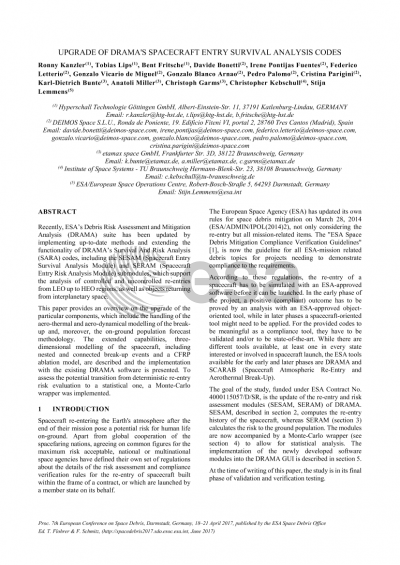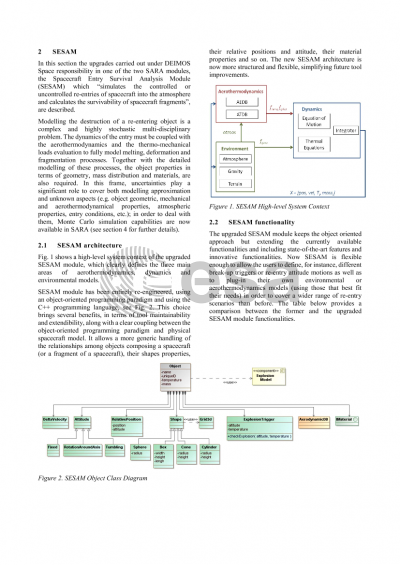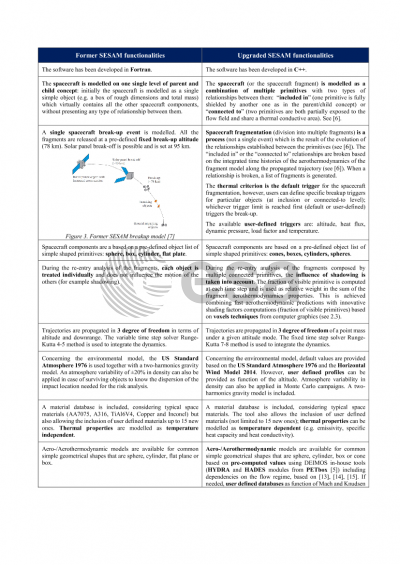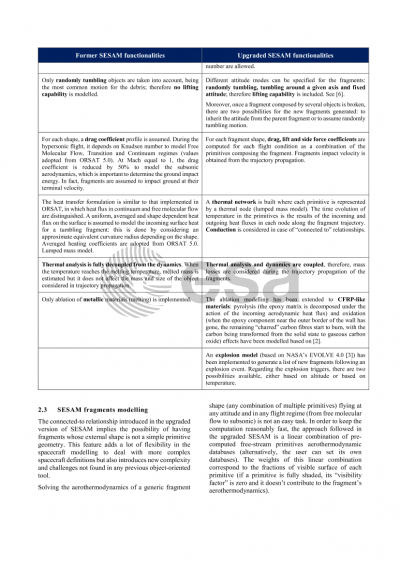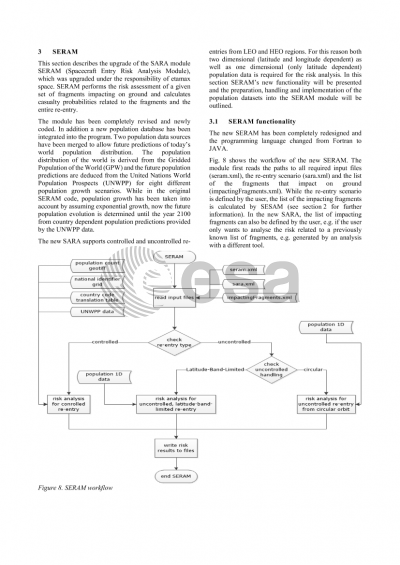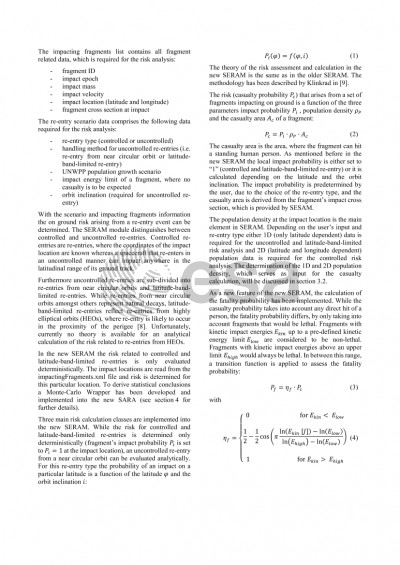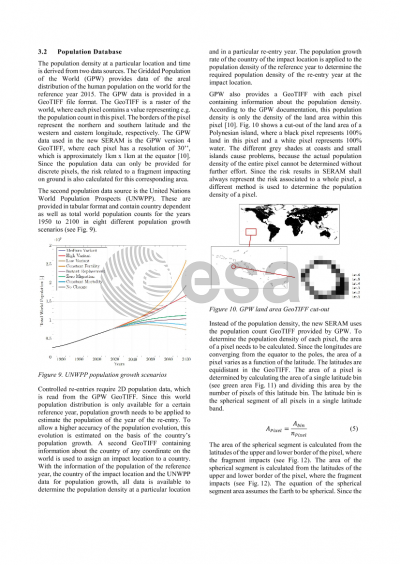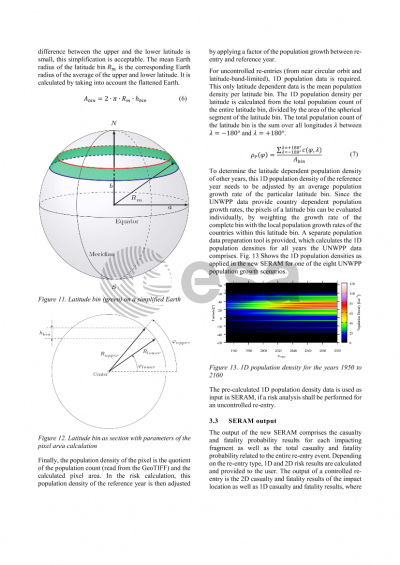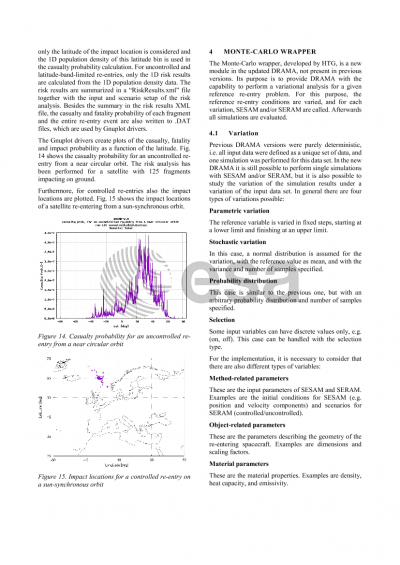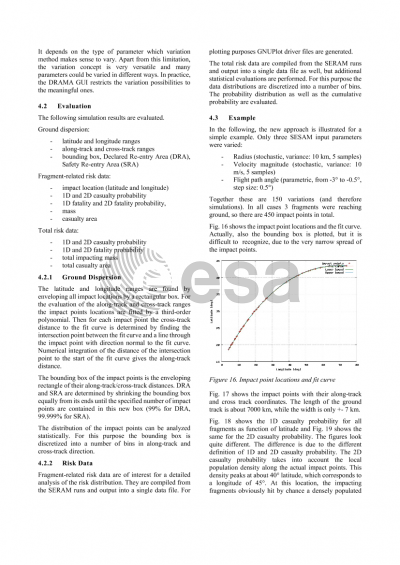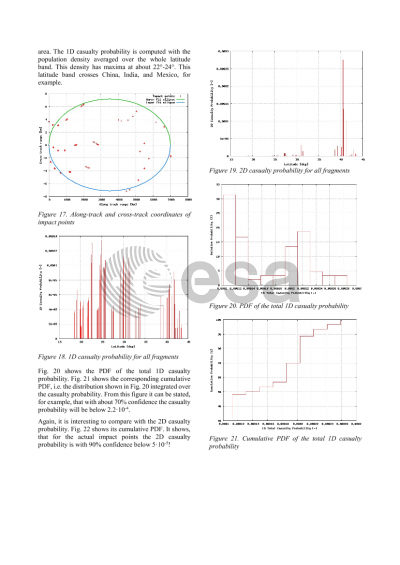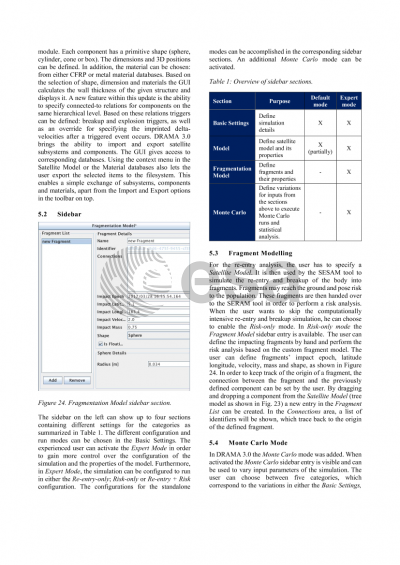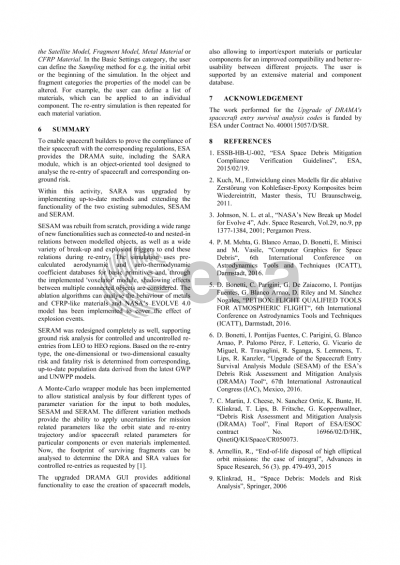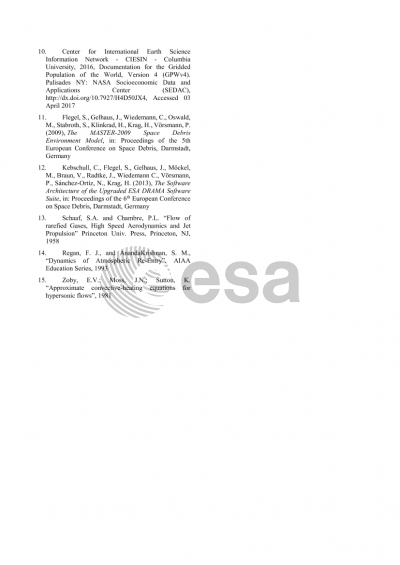Document details

Abstract
Over recent years, the rising population of space debris has been increasingly recognized as a serious issue for the space-faring community. Debris can come from a wide number of sources, among others, failed launches or satellites at the end of their lives. Even if many objects demise during re-entry into the Earth’s atmosphere, fragments can survive and reach ground leading to risks to people and properties. To limit this risk, international organisations agreed on the standard ISO 24113. ESA as an “approving agent” restricts the maximum acceptable casualty expectancy to 1/10000 for a single uncontrolled re-entry.
According to the ESA Space Debris Mitigation Compliance Verification Guidelines, the re-entry of a spacecraft has to be simulated with an ESA-approved software before it can be launched. To enable spacecraft builders to prove the compliance of their spacecraft with the corresponding regulations, ESA provides the Debris Risk Assessment and Mitigation Analysis (DRAMA) suite, including the Survival and Risk Analysis (SARA) module.
Recently, SARA has been updated, implementing up-to-date methods and extending the functionality of its two submodules SESAM (Spacecraft Entry Survival Analysis Module) and SERAM (Spacecraft Entry Risk Analysis Module), supporting controlled and uncontrolled re-entries from LEO to HEO regions and for objects returning from interplanetary space.
The upgraded SESAM, implements state-of-the-art features and innovative and unique functionalities. Users can build up spacecraft as combination of multiple primitives (spheres, cones, cylinders and boxes) using two types of relationships: “included in” (one primitive is fully shielded by another one) or “connected to” (two primitives are both partially exposed to the flow field). Therefore, the spacecraft fragmentation is a process (not a single event) which is the result of the evolution of the relationships established between the primitives, taking into account aero-thermodynamic characteristics. Aero-thermodynamic coefficients are automatically computed for the full spacecraft and for each spacecraft fragment based on innovative methods from computer graphics. Moreover, the explosion model has been reviewed and the ablation modelling has been extended to deal with CFRP-like materials. Now SESAM is flexible enough to allow users to define different break-up triggers or re-entry attitude motions as well as defining their own environmental or aero-thermodynamics models.
The SERAM module has been revised and re-coded. A new population database has been integrated. Two population data sources have been merged to allow future predictions of today’s world population distribution. The world population distribution is derived from the Gridded Population of the World and future population predictions are deduced from the United Nations World Population Prospects (UNWPP) for eight different population growth scenarios. The future population evolution is determined from country dependent population predictions until the year 2100 provided by the UNWPP data. Since SARA supports controlled and uncontrolled re-entries from LEO and HEO regions, both two-dimensional (latitude and longitude dependent) as well as one-dimensional (only latitude dependent) population data is used.
To assess the potential transition from deterministic re-entry risk evaluation to a statistical one, a Monte-Carlo wrapper for SARA has been implemented.
Preview
